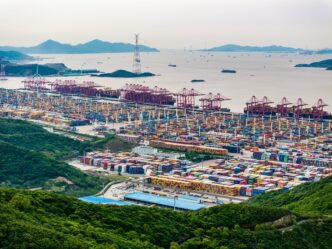In a recent analysis, the potential impact of President Donald Trump's proposed tariffs on rural American communities is under scrutiny. These tariffs, which target various international imports, are seen by some as a means to revitalize regions suffering from industrial decline due to globalization. Neal K. Shah, CEO of CareYaya Health Technologies, argues that the tariffs offer a necessary intervention to protect local industries and jobs from the negative effects of global trade practices.
Shah contends that while tariffs may lead to minor increases in consumer prices, the long-term benefits to struggling communities outweigh these costs. He suggests that the perception of tariffs as merely symbolic is misguided, emphasizing that the so-called inexpensive goods brought by globalization often come at the expense of local job loss and community deterioration. According to him, the slight price increase for goods is a small sacrifice compared to the potential economic rejuvenation tariffs could bring to areas plagued by unemployment and economic stagnation.
Critics, however, caution against the historical pitfalls of protectionist policies, referencing the Smoot-Hawley Tariff Act of 1930, which is often blamed for exacerbating the Great Depression through trade wars. Shah counters this argument by citing examples where tariffs have successfully bolstered industries, such as the protection of the steel industry post-Civil War and the rescue of Harley-Davidson under President Ronald Reagan. He maintains that when tariffs are strategically implemented with clear objectives, they can foster long-term industrial growth and stability.
The debate extends to whether it's prudent to invest resources in reviving domestic manufacturing or redirect efforts to sectors where the U.S. already excels. Shah challenges the notion that manufacturing is geographically determined, arguing that competitive advantages can be cultivated through strategic investments and policy decisions. He points out that retraining programs for displaced workers have had limited success and emphasizes the need for policies that truly support sustainable economic growth in affected regions.
Overall, the discussion highlights the complex considerations involved in economic policy, particularly in the balance between immediate consumer costs and the broader objective of revitalizing domestic industries. As President Trump's proposed tariffs continue to be a topic of debate, their effectiveness in delivering tangible benefits to rural America remains a contentious issue.








